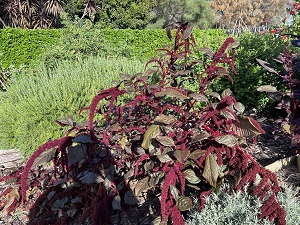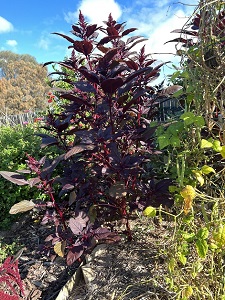Amaranthus - the stars of the autumn garden
- Jennifer Watkins
- Apr 1, 2022
- 2 min read

With their height and vivid hues, Amaranthus are a highlight of the garden in autumn. These annual plants, which are sown from seed, provide great interest in the flower and vegetable garden. Historically, Amaranthus have been prized by many societies for their nutritional qualities. For example, in pre-Hispanic times, the Aztecs cultivated the plant for its edible grain seeds while in eastern Asia, the plant is used as a leaf vegetable. In Australia, Amaranthus is lauded for its ornamental value and I have three different varieties in flower now, jostling for space amidst the remnants of pumpkin vines.
Amaranthus caudatus ('Love lies Bleeding') is the one most commonly seen. Growing to 2 metres tall, it's reminiscent of gardens of Victorian times, enchanting with its long drooping chenille-like tassels. (It also has another form 'Viridis' where the tassels are green, rather than red).
Amaranthus in many forms
There's always so much to look forward to in gardening and the new varieties of Amaranthus which have been introduced in recent years bear testament to the advances made. For instance, Amaranthus caudatus 'Opopeo'. Growing to over 2 metres, the dark purple-red tassels are held aloft (rather than drooping, as is the case for most varieties). This is truly a superb addition to my garden. Every morning I admire its exuberance and outstanding intensity of colour and form.
More than ornamental...
And there's another one - Amaranthus cruentus 'Hope Red Dye'. This is a lower-growing plant - and has edible leaves. Interestingly, its name derives from its use as a source of a deep red dye. It was used for this purpose by the Hopi (a tribe in the western United States of America). Again, this plant is in the vegetable garden. I'm hoping all my Amaranthus will self-seed (as does my "Love lies Bleeding") so that I can welcome their presence again, next year.
Amaranthus caudatus 'Opopeo' Amaranthus creuentus 'Hope Red Dye'





Commentaires